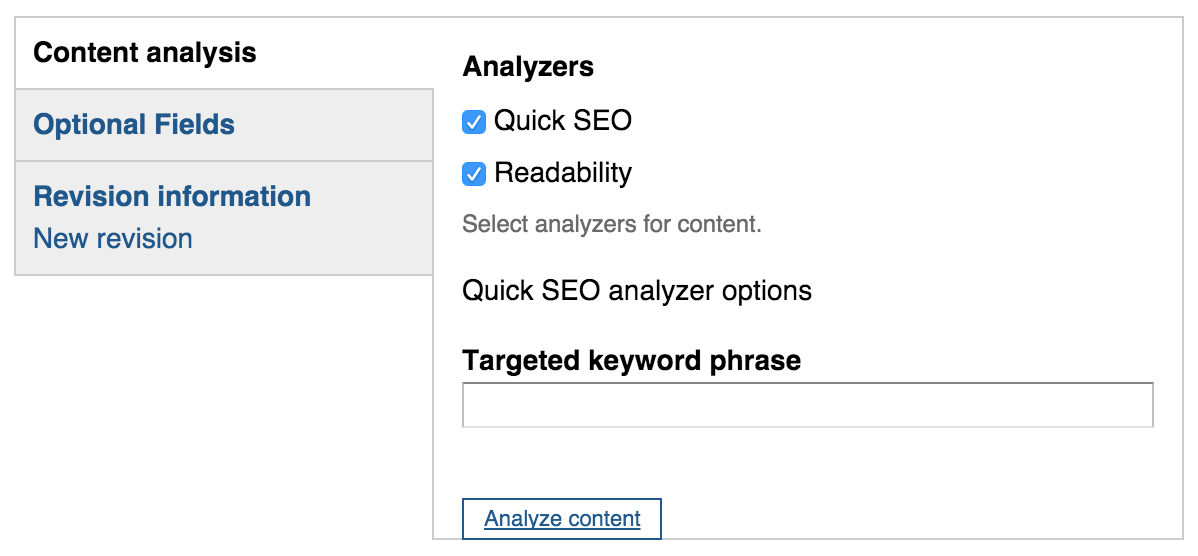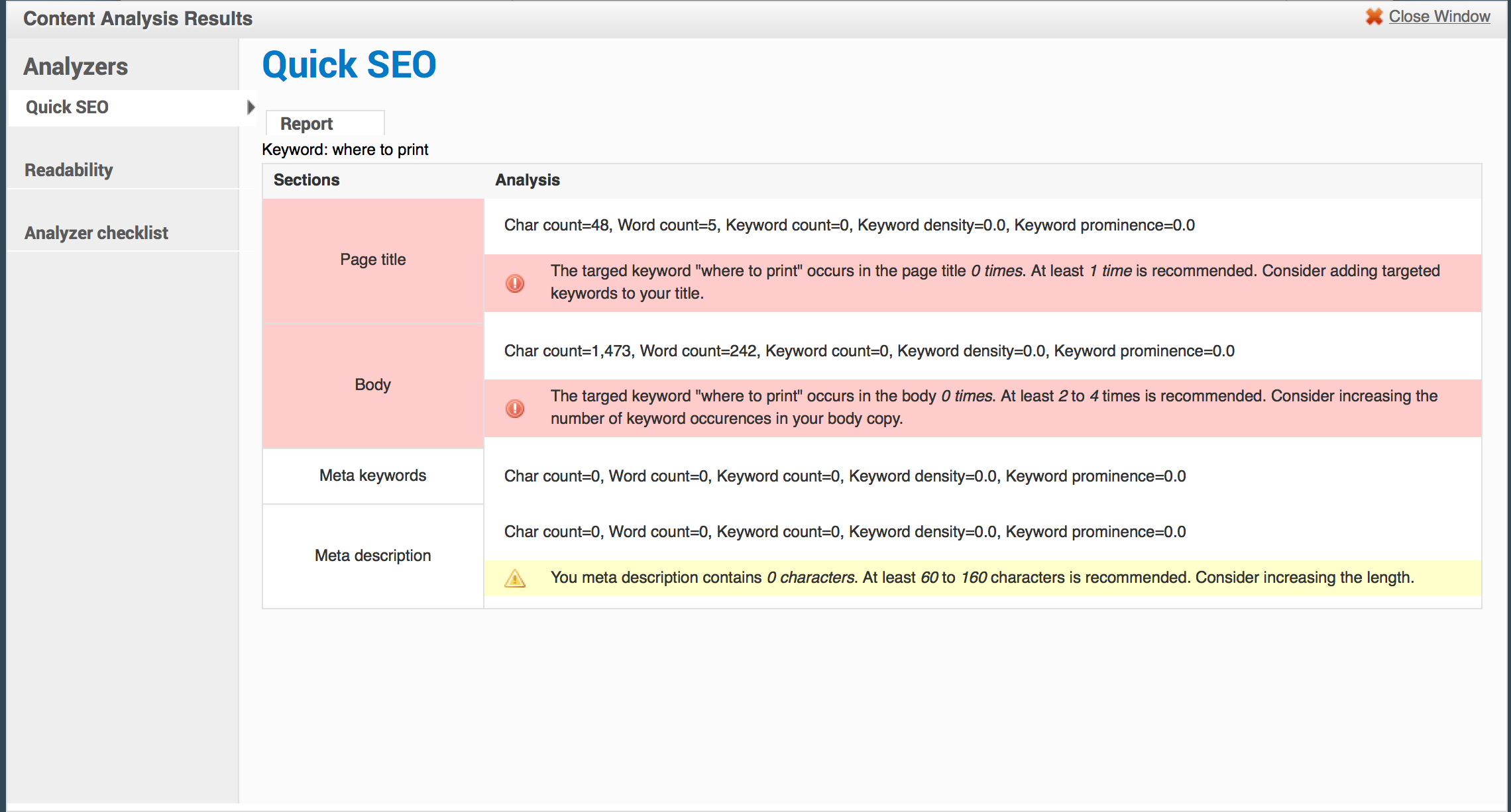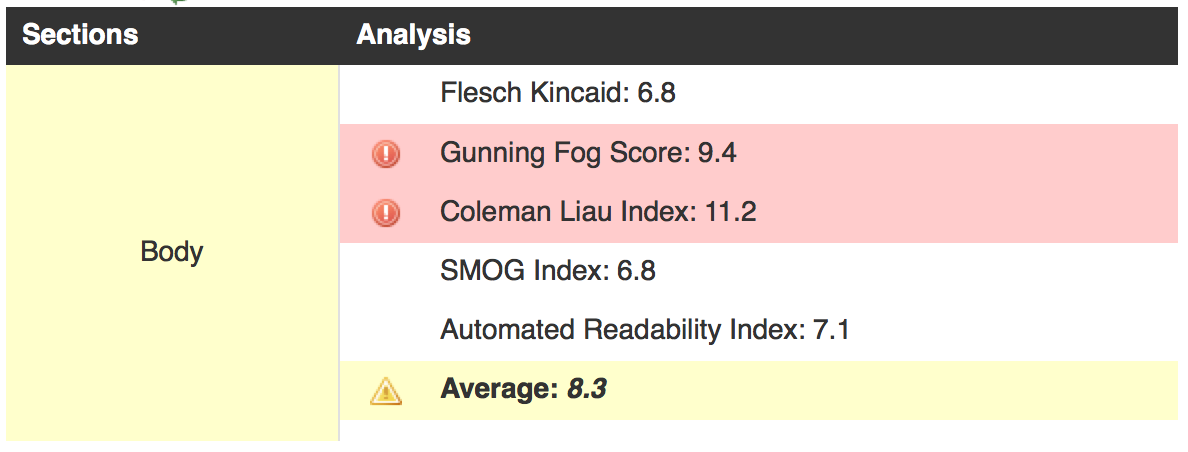This is the last post in a series about rewriting content. Though you’re welcome to read it by itself, you might want to read the first four posts first: One, Two, Three, and Four.
Now that we’ve fixed our page so that it’s easier to read, we need to make sure it’s easy to find. When we talk about making things easy to find, we really mean making them easy to find by Google, as more people find our content on the website via Google than they do any other source. Writing easy to find content is one aspect of Search Engine Optimization, or SEO.
Writing for SEO
Soon, we’ll be adding a new tool to the Drupal edit interface to help you perform a keyword analysis. To use it, you’ll simply edit a page, then scroll all the way to the bottom:
After we turn it on, if your user has the correct role, you’ll see that Content analysis tab. Let’s start with doing a Quick SEO analysis, and put a phrase in the box. I’ll use “Where to print”, since that’s something I think people might google to find out where to print. Then click the button.
Your results will pop over the page, and be very hard to miss. But don’t worry – if you accidentally close that popover, the results will still be in the page. Let’s look at each of the sections in the results.
Page Title – The title is probably the most important place to put important keywords, but it’s important not to make it too long. Our current title is “TitanPrint”. That’s also something that people might google, especially as we try to message out about TitanPrint. So I’m ok with it, and we’ll leave this alone.
Body – The body is the second best place to put your important keywords and phrases. We’re missing my phrase entirely. So I should probably fix that. Let’s rework the second to last sentence:
You can use your print allocation at locations around campus.
And instead we can write:
Curious where to print? View print locations to across campus.
And of course we’ll link print locations to to the proper page.
Meta Keywords – We don’t use these. They’re generally ignored.
Meta Description – When you search for something, Google helpfully tries to use a snippet of the page to give you a preview of what’s on the page. If you’re finding that snippet to be unhelpful, you can enter a description that Google may use instead. If you’d like to enter one, check under the “Optional Fields” tab at the bottom of the page, and fill out the Search Engine Summary field.
Readability
In the popover, there was another tab labeled readability, which provides a series of different reading level scores. Depending on your content these may vary wildly, so it’s usually best to just use the average.
Our reading level has an average of 8.3 – pretty close to what HemingwayApp told us. This interface isn’t as friendly as HemingwayApp, and doesn’t provide live feedback, but it saves you a lot of copying and pasting, so we encourage you to give it a try.
That’s it!
We’re almost done testing content analysis, so hopefully by the time you read this post you’ll be able to use it. If you have any trouble finding it, or using any of the tools we’ve covered in these posts, please, please, please contact us at webmaster@lanecc.edu and we’ll help you out. Also don’t hesitate to contact us for additional help with SEO – we have a bunch of information from Google Analytics that we’d be happy to share.
And be on the lookout for some upcoming sessions where we rework some content together, live, in person. Keep checking the announcements box on the Drupal dashboard right after you log in.



